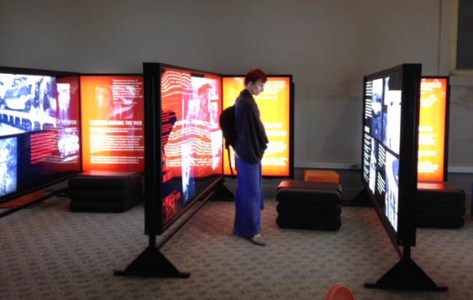
of JANM’s Common Ground exhibition.
My name is Lauren Wong. I am an Ambassador Girl Scout with Troop 881, based at the Orange County Buddhist Church in Anaheim, California, and a candidate for the Girl Scout Gold Award. This award is similar to the Eagle Scout rank in Boy Scouts; it is the highest award a Girl Scout can earn. Applying for it is a seven-step process that begins with identifying a global issue and ends with creating a project that educates, inspires, and promotes awareness of that issue. For my Gold Award application, I have created a special Girl Scout patch program for the Japanese American National Museum.
Since I was little, my grandmother has told me stories of her incarceration at Tule Lake concentration camp, inspiring my passion for learning more about my Japanese American history. Students do not generally get the opportunity to learn about the mistreatment of Japanese Americans during World War II, as it is often overlooked in history classes. Even today, many of my school friends do not know about the camps. My goal is to educate the general public and inspire them to appreciate the lives they have today and not let history repeat itself.

I have created an educational tool called Experience the Past, available in three separate worksheets geared toward elementary school students, middle school students, and high school students/adults. The worksheets, which can be requested at JANM’s front desk, are designed to accompany a visit to the museum’s core exhibition, Common Ground: The Heart of Community. They pose questions and suggest exercises that are designed to help visitors identify with the exhibition, think more deeply about what they’re seeing, connect it with aspects of contemporary life, and converse with others about their experience.
At the end of their visit, participants who complete a worksheet earn a custom patch that I created. Through this program, I hope to spread awareness of the history of Japanese American incarceration, which is important not just to Japanese American history, but to American history as a whole.
Tickets are still available for two upcoming Girl Scout programs at JANM. On January 9 and 16, current Girl Scouts are invited to take a private tour of Giant Robot Biennale 4, followed by a zine-making workshop with exhibiting artist Yumi Sakugawa. For more details and to register, visit janm.org.
















